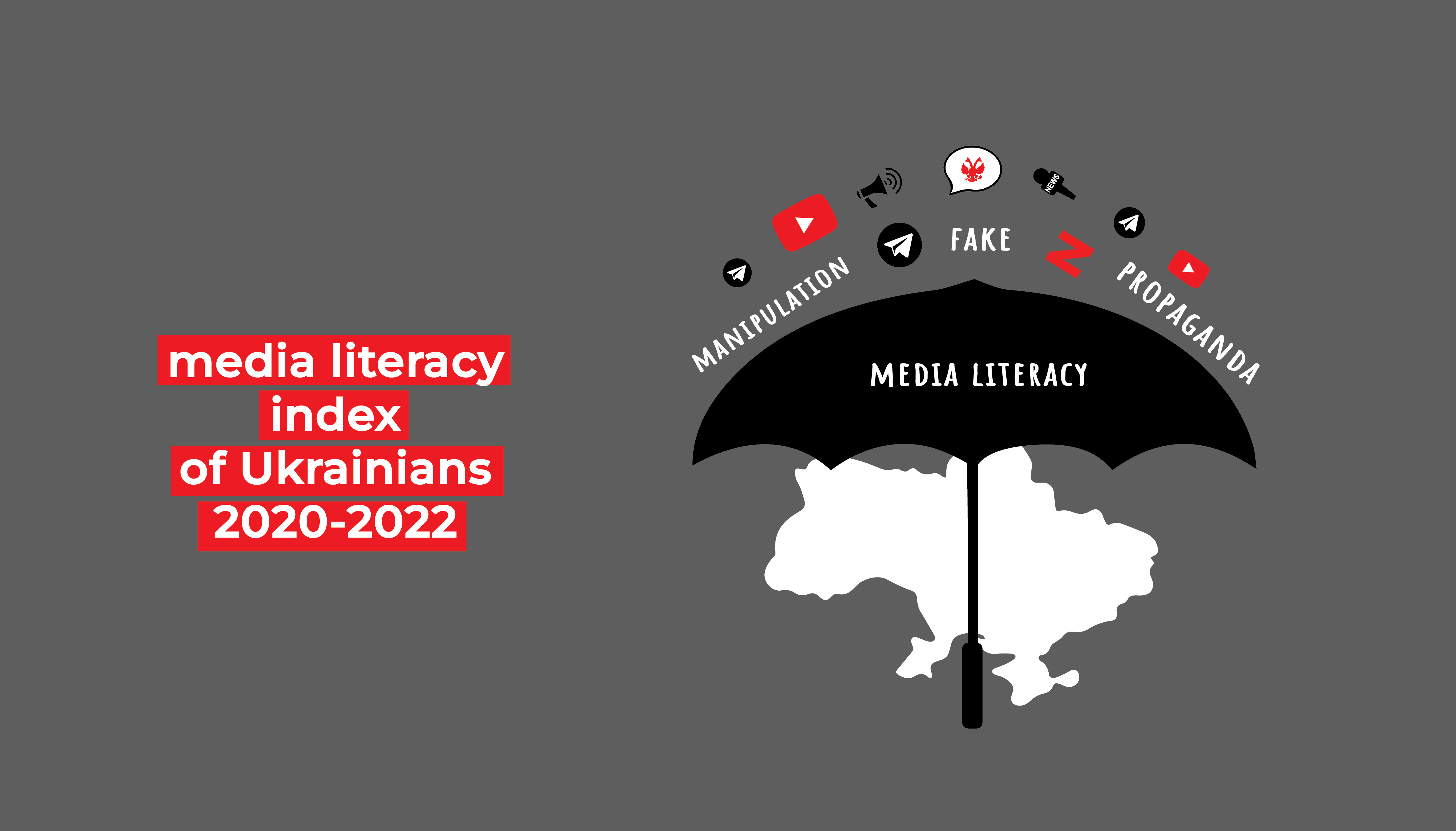Українською читайте тут.
The non-governmental organization "Media Detector" conducted a quantitative study to determine the index of media literacy of Ukrainians, that is, the level of ability to consciously perceive and critically interpret information, as well as use a variety of media, in comparison with the indicators of the first and second wave of the study in 2020/2021. The study was carried out with the financial support of the Danish Ministry of Foreign Affairs (DANIDA).
Detector Media, an NGO, conducted a study to gauge the level of media literacy among Ukrainians, measuring their ability to perceive and interpret information critically while using different media sources. The study, which received financial support from the Danish Ministry of Foreign Affairs (DANIDA), compared results from the first and second wave of research conducted in 2020/2021.
Results show a significant increase in the general media literacy index of Ukrainians between 2020 and 2022. The percentage of the audience with above-average levels of media literacy increased from 55% to 81%, while the average value of the indicator rose from 4.8 to 5.9 points. Within the general level of media literacy, the percentage of individuals with high competency doubled in three sub-indices: understanding the role of media in society (from 45% to 72%), digital competence (from 49% to 64%), and sensitivity to distorted content (from 56% to 66%). However, the sub-index measuring media use did not change significantly.
As expected, media literacy was higher among 18-25 year olds, thanks to their usage and digital literacy sub-indices, and lower among the older age group of 56-65 year olds. Individuals with lower educational status also had lower media literacy indices, with 33% of those with general secondary education receiving low or below-average scores, compared to only 10% of those with full or partial higher education.
There were significant differences in media literacy levels between respondents with different financial statuses. Those with higher levels of well-being had higher indices, with 27% of those in the low well-being category receiving low or below-average scores, compared to only 12% of those who had enough for everything and were able to save money.
The study aimed to validate the media literacy index concept and calculate it for different categories of the Ukrainian audience. The methodology involved quantitative research using face-to-face interviews with a standardized questionnaire on a tablet (CAPI).
Geography: a national study.
Sample size: 1200 respondents.
Target audience: adult population of Ukraine (18+).
Type of sample: representative in terms of age, sex, typical size of the settlement and region (the study was not conducted in the temporarily occupied territories of Donetsk, Luhansk, Zaporizhzhia, Kherson regions and in the Autonomous Republic of Crimea).
Field stage: 23.12.2022 - 12.01.2023, carried out by the company "New Image Marketing Group".
The model of the index of media literacy was based on the concept of Len Masterman and the results of the qualitative stage of the research "Practices of media consumption of Ukrainians: conceptual development of the index of media literacy of the audience", prepared by order of the NGO "Detector Media" (January 2020).
The refined model of media competence includes four categories and 42 indicators.
Understanding: the role of the media in society, the depth of the influence of the media on consciousness at the level of frames of perception of evaluation, as well as behavioral patterns; an idea of the work of the media industry and the perception of the Ukrainian media landscape; awareness of issues of regulation of the media environment and attitude to public broadcasting.
Usage: number of sources of information about social and political news per week; duration of familiarization with the news per day; motives for using the Internet; devices that respondents use to access the Internet.
Digital competence: the Internet as a source of news on social and political topics; understanding the peculiarities of functioning and terminology of new media; digital security practices; practices of creating own media content.
Distorted media content: sensitivity to misinformation/fakes, manipulative techniques and manipulative media content.



